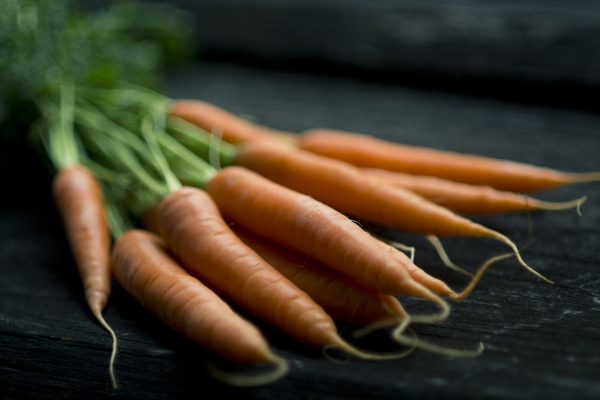Updated seed varieties for Southcentral Alaska
 I was reviewing my previous posts the other day and was shocked to see I had not yet put together a list of my favorite seed varieties for south central Alaska. Here they are with a few notes:
I was reviewing my previous posts the other day and was shocked to see I had not yet put together a list of my favorite seed varieties for south central Alaska. Here they are with a few notes:
Beets:
- Bull’s Blood –I only got serious with beets this year (for the root, not for the greens). Bull’s Blood worked fine and produced large, sweet roots.
Broccoli:
- Blue Wind (F1) – This is now my go-to variety. Large heads and excellent side-shoot production. We can’t keep up with the half-dozen broccoli we plant each year.
Brussel Sprouts:
- Franklin (F1) – Another excellent variety. Make sure to remove lower leaves as the summer goes on, and to pinch the growth tip a month before harvest. Harvest after a couple frosts.
Cabbage:
- Golden Acre – Standard, easily grown variety.
- Storage #4 – An excellent storage variety with incredibly dense heads. Slugs can’t eat these cabbage becasue the heads are so dense! However, they are dry — good for storage and soups, but not very good for fresh eating.
Carrots:
- Bolero (F1) — an excellent storage carrot
- There are lots of other good varieties (usually Nantes types) around. We usually plant some rainbow mix carrots for fresh eating.
Corn:
- Yukon Chief — Pathetic looking ears, but they were developed by the University of Alaska and tend to ripen when other varieties don’t.
- Expresso (F1) — I tried this variety for the first time this year. Most of my ears did not mature/get well pollinated, but the mature ears were AMAZING. Start these early.
- Spring Treat (F1) — Similar to Expresso
Cucumber:
- Wautoma — I am sold on this variety of pickling cucumber. Good crop of cucumbers, but most importantly, they’re never bitter! I’ve had terrible luck with bitter cucs (from my own poor heat and water management), but Wautoma will produce bitter-free cucs every time.
- Telegraph Improved — The go-to greenhouse English cucumber.
Dill:
- Bouquet — I’ve never tried another kind of dill, but this seems to work for me. Very susceptible to aphids.
Kale:
- Most kale grows well up here. Blue Curled Scotch is my wife’s favorite, and we plant Russian Red and Tuscan-style kale just to add some different texture to our salads. Kale is perhaps the most reliable green here in Alaska and can be harvested long after the first frost.
Lettuce
- Most lettuces to well up here. We plant a mixture of romaine (Parris Island Cos), butter (Buttercrunch), and salad mixes (Spicy Mesclun Mix)
Pac Choi:
- Most varieties will do. We go with the Joi Choi, which matures early.
Peppers:
- El Jefe (F1) — steady producer of jalepeno peppers in the greenhouse. Matures in mid-August.
- Red Flame — A heavy bearing, excellent drying pepper for pepper flakes and other uses. They take longer to mature, so while I have many harvestable peppers by the first frost, I usually bring them inside in the fall to add color to the living room. They’ll keep producing for a couple months if brought inside.
- Red Rocket — Nearly identical to Red Flame. I may prefer these even more.
Potatoes:
- Any quality, locally-produced seed potato will grow well up here. We plant a mix of white and red. Don’t forget to mound them as they grow and never use store-bought potatoes. They have been sprayed with an anti-sprouting chemical and will not thrive. They also tend to carry potato diseases.
Pumpkin:
- Neon (F1) — a great little pumpkin that always matures in my raised beds. I cover the raised bed with hoops and plastic in the spring and take them off when the squash and corn outgrow it. Excellent eating pumpkins.
Squash (acorn):
- Reno(F1), Jet (F1) — Both produce a small harvest of acorn squash. Using raised beds and/or hoop houses, they are easily grown outside.
Swiss Chard:
- Swiss Chard grows very well up here and is another incredibly reliably green. We just plant the rainbow mix to add some color to our salads.
Tomatoes:
- Siletz — A determinate tomato that produces a respectable harvest every year in the greenhouse.
- Gold Nugget — An excellent orange-colored cherry tomato that produces tons of fruit every year in the greenhouse. It is always the first tomato to produce fruit, and the last one to stop producing.
Where do I find these seeds?
Every year I order seeds from Johnny’s and Territorial seed companies. Many of these varieties can be found on the local seed racks. Buy the Ed Hume seeds if you’re buying seeds in a local store; the varieties on his racks have been selected for cold-weather climates, and most tend to do well up here.
Feedback?
Have any varieties that are your favorites, or you think I should try? Leave them in the comments below!